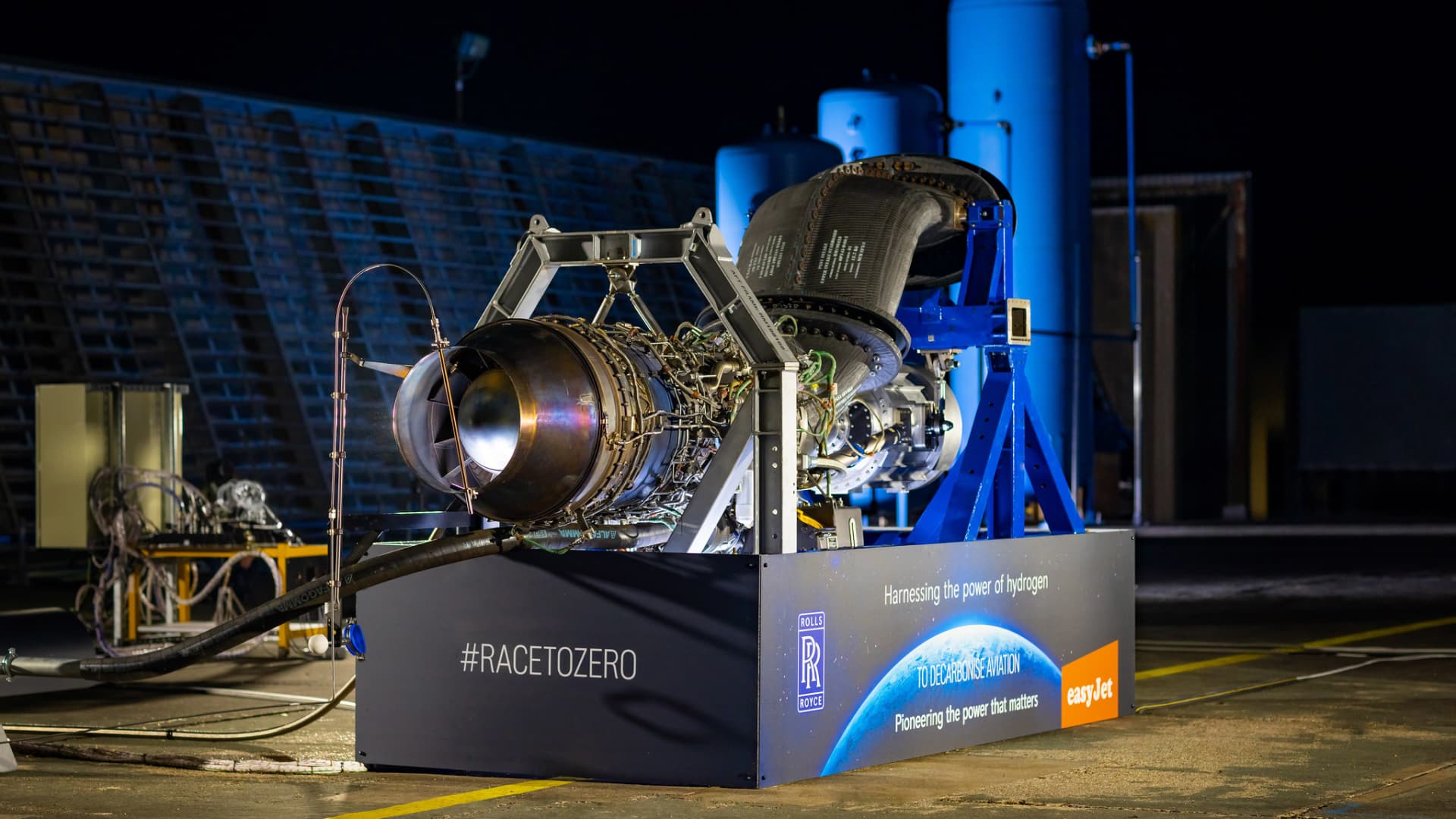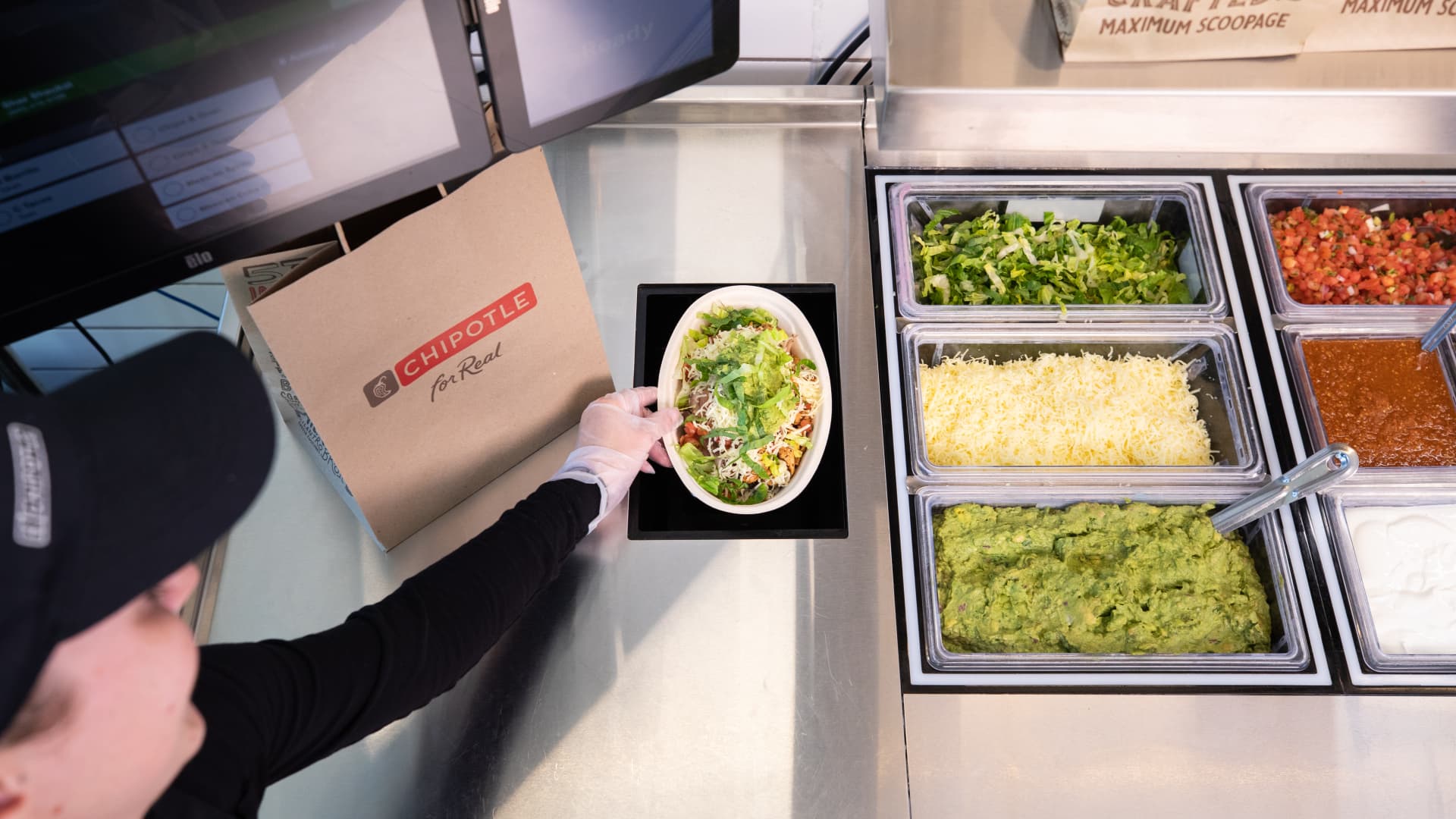
LONDON — Plans to reduce the significant environmental effects of aviation took a step forward this week after Rolls-Royce and easyJet said they had carried out the ground test of a jet engine that used hydrogen produced from tidal and wind power.
In a statement this week, aerospace giant Rolls-Royce — not to be confused with Rolls-Royce Motor Cars, which is owned by BMW — described the news as a “milestone” and said it was “the world’s first run of a modern aero engine on hydrogen.”
The test, which was carried out at an outdoor site in the U.K., used a converted regional aircraft engine from London-listed Rolls-Royce.
The hydrogen came from facilities at the European Marine Energy Centre in Orkney, an archipelago in waters north of mainland Scotland. Since its inception in 2003, EMEC has become a major hub for the development of wave and tidal power.
Grant Shapps, the U.K.’s secretary of state for business, energy and industrial strategy, said the test was “an exciting demonstration of how business innovation can transform the way we live our lives.”
“This is a true British success story, with the hydrogen being used to power the jet engine today produced using tidal and wind energy from the Orkney Islands of Scotland,” Shapps added.
Hydrogen’s uses
Described by the International Energy Agency as a “versatile energy carrier,” hydrogen has a diverse range of applications and can be deployed in a wide range of industries.
It can be produced in a number of ways. One method includes electrolysis, with an electric current splitting water into oxygen and hydrogen.
If the electricity used in this process comes from a renewable source such as wind or tidal power, then some call it “green” or “renewable” hydrogen. Today, the majority of hydrogen production is based on fossil fuels.
Using hydrogen to power an internal combustion engine is different to hydrogen fuel cell technology, where hydrogen from a tank mixes with oxygen, generating electricity.
As the U.S. Department of Energy’s Alternative Fuels Data Center notes: “Fuel cell electric vehicles emit only water vapor and warm air, producing no tailpipe emissions.”
By contrast, hydrogen ICEs can produce other emissions. “Hydrogen engines release near zero, trace amounts of CO2 … but can produce nitrogen oxides, or NOx,” Cummins, an engine maker, says.
Industry’s aims
The environmental footprint of aviation is considerable, with the World Wildlife Fund describing it as “one of the fastest-growing sources of the greenhouse gas emissions driving global climate change.”
The WWF also says air travel is “currently the most carbon intensive activity an individual can make.”
Earlier this year, Guillaume Faury, the CEO of Airbus, told CNBC that aviation would “potentially face significant hurdles if we don’t manage to decarbonize at the right pace.”
Faury added that hydrogen planes represented the “ultimate solution” for the mid and long term.
While there is excitement in some quarters about hydrogen planes and their potential, a considerable amount of work needs to be done to commercialize the technology and roll it out on a large scale.
Speaking to CNBC last year, Ryanair CEO Michael O’Leary appeared cautious when it came to the outlook for new and emerging technologies in the sector.
“I think … we should be honest again,” he said. “Certainly, for the next decade … I don’t think you’re going to see any — there’s no technology out there that’s going to replace … carbon, jet aviation.”
“I don’t see the arrival of … hydrogen fuels, I don’t see the arrival of sustainable fuels, I don’t see the arrival of electric propulsion systems, certainly not before 2030,” O’Leary added.






